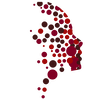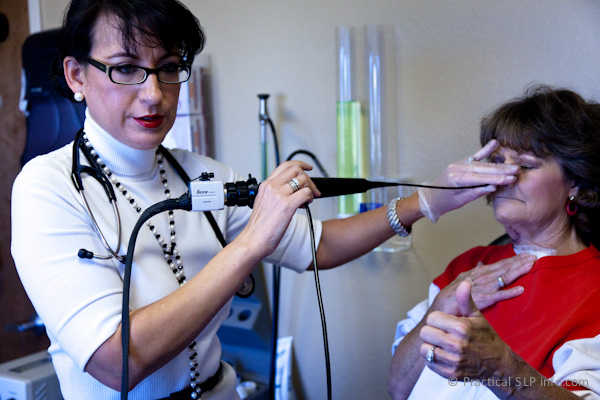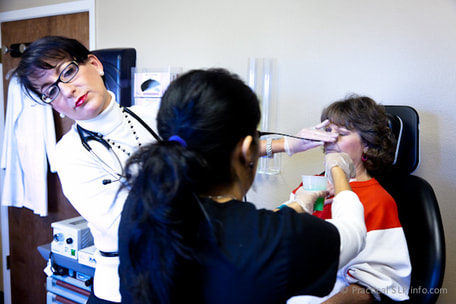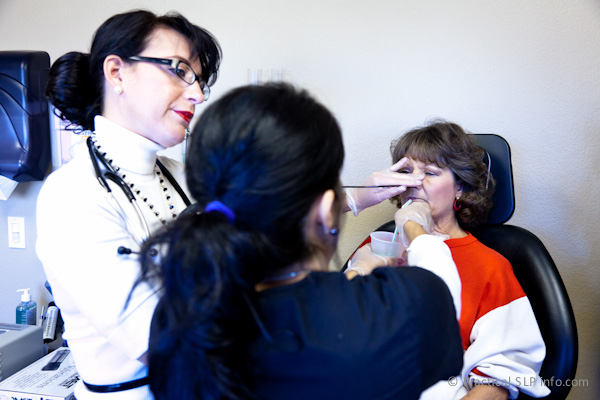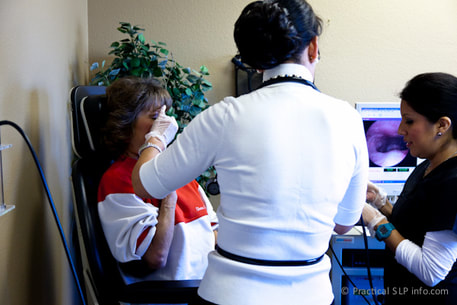FIberoptic Endoscopic
Examination of Swallowing (FEES)
This is the most commonly performed swallow evaluation in this office. During this examination, a flexible nasopharyngeal fiberscope, as used by the physicians in the office, is passed into the throat. The throat is then thoroughly examined and may be tested for sensitivity as well as reflexes, like cough and swallow.
Dyed food samples are then used to test the swallow ability across a variety of different textures. In doing this, the SLP is able to determine if there is normal swallow function or if there is a dysphagia. If dysphagia is present, the SLP will assess why the swallow is not normal, what can be safely eaten by mouth, if tube feeding is warranted and what necessary treatment is needed to improve the swallow.
Following the examination, you will be thoroughly counseled regarding findings, eating recommendations and necessary interventions to improve the swallow function.
Modified Barium Swallow
This examination requires use of fluoroscopy, a type of x-ray, and for this reason, cannot be done in the office. It is less commonly used in this practice to assess the swallow, although it is performed on occasion, as deemed appropriate by the SLP staff. This is typically indicated when patients are unable to tolerate the presence of the endoscope and/or when esophageal dysfunction is suspected.
For this examination, various textures of barium are used to test the swallow ability across a variety of different textures. In doing this, the SLP is able to determine if there is normal swallow function or if there is a dysphagia. If dysphagia is present, the SLP will assess why the swallow is not normal, what can be safely eaten by mouth, if tube feeding is warranted and what necessary treatment is needed to improve the swallow.
Following the examination, you will be thoroughly counseled regarding findings, eating recommendations and necessary interventions to improve the swallow function.
Clinical Swallow Examination
This is a non-instrumental examination conducted by the SLP. During this examination, various food textures and liquids may be testing with clinical observations made. In this practice, a clinical examination is not frequently performed as instrumental findings can be more valid, especially in the presence of surgical changes. Often this is done when there is very little suspicion of dysphagia.
